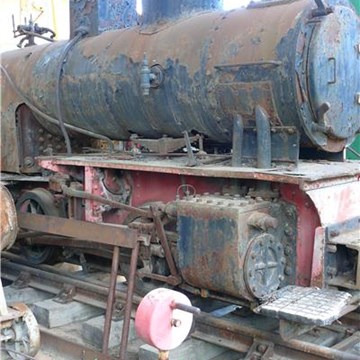Andover Museum and Museum of the Iron Age
Situated on the River Anton, a tributary of the Test, the historic market town of Andover boasts two museums in the same building. Andover Museum, telling the story of the town and surrounding area, opened in 1981, and it was joined in 1986 by the Museum of the Iron Age, which tells the story of nearby Danebury hillfort.
Grade II listed, the museum building started life as a Georgian townhouse in the mid 18th century. Evidence of this can be seen in the fine staircase, wooden panelling and decorative fireplaces. In the 1840s, the building was purchased by local philanthropist Martha Gale who gifted it to Andover Grammar School. The brick extension that houses the Museum of the Iron Age was added in the 1880s.
Things to do
The museum is a great place for the whole family to enjoy. Here are just a few of the things you can do during your visit:
- Discover the history of Andover from the Neolithic era to the current day
- Children can explore the dressing-up corner where there is a selection of fun and historic themed costumes
- Check out our regular programme of family-friendly craft days with drop-in make-and-take activities and bookable workshops
- Spot the objects around the museum with our fun activity sheets
- Visit our welcoming café and browse the museum shop
The story of Andover
Starting on the ground floor, the galleries reveal the importance of the local geology and natural history of the area, the all-important chalk streams and the abundance of flint, used to form stone tools.
The first floor galleries continue the story, starting in the Neolithic era and finishing with Andover in the 20th century. Along the way, learn about the origins of Andover, its royal connections, its development through the medieval period and its reputation as a riot town during the Industrial Revolution.
Workhouse
In 1846, a scandal unfolded in Andover Workhouse that was to stir the nation. A diorama shows the pitiful state to which the inmates sunk, chewing bones they were supposed to be crushing for fertiliser, having been deprived of food and dignity by the master and an uncaring board of governors. The scandal led to a change in the way workhouses were monitored nationally.
Weyhill Fair
Immortalised as Weydon Priors by Thomas Hardy, at its height in the early 18th century Weyhill Fair offered as many as half a million sheep for sale, alongside many other types of livestock and commodities such as leather, cheese and hops. Look for the tale of the horning cup.
Taskers
Founded by the Tasker brothers in the early 19th century, the firm initially made agricultural implements in their factory known as the Waterloo Ironworks in Anna Valley. They later moved into steam power and manufactured the Little Giant steam tractor. As the use of steam power declined, they moved into making trailers including the Queen Mary trailer used to move aircraft in WWII.
Temporary exhibition gallery
Situated on the ground floor, the temporary exhibition gallery displays work by local people and groups. Amateur and professional artists and craftspeople can apply to exhibit in the gallery or to present their work in the community to a wider audience.
Other venues

Aldershot Military Museum and Rushmoor Local History Gallery
Queens Av, Aldershot GU11 2LG, Farnborough, United Kingdom
Exhibitions and events
We don't have anything to show you here.
Educational programs
We don't have anything to show you here.
Collections
We don't have anything to show you here.














